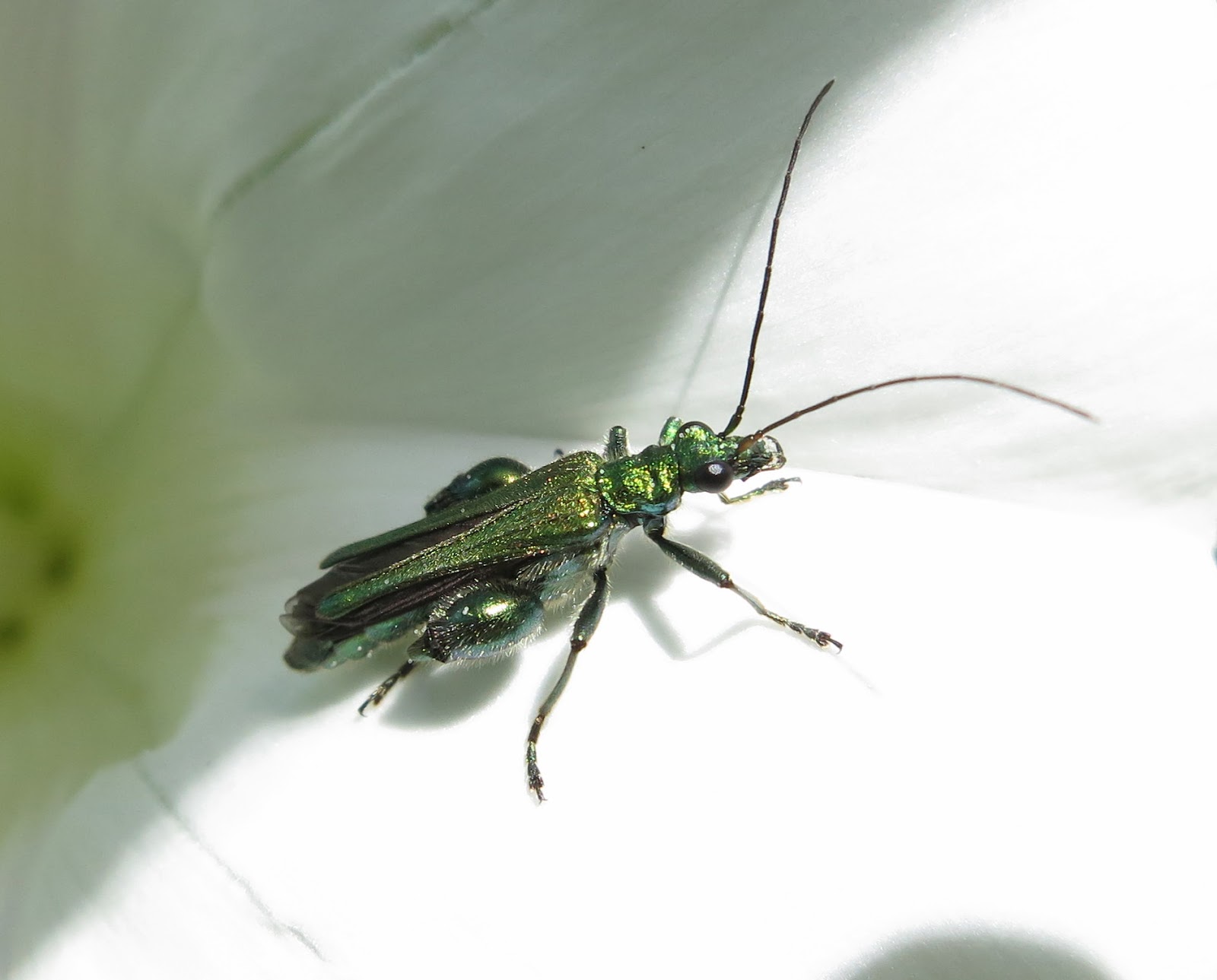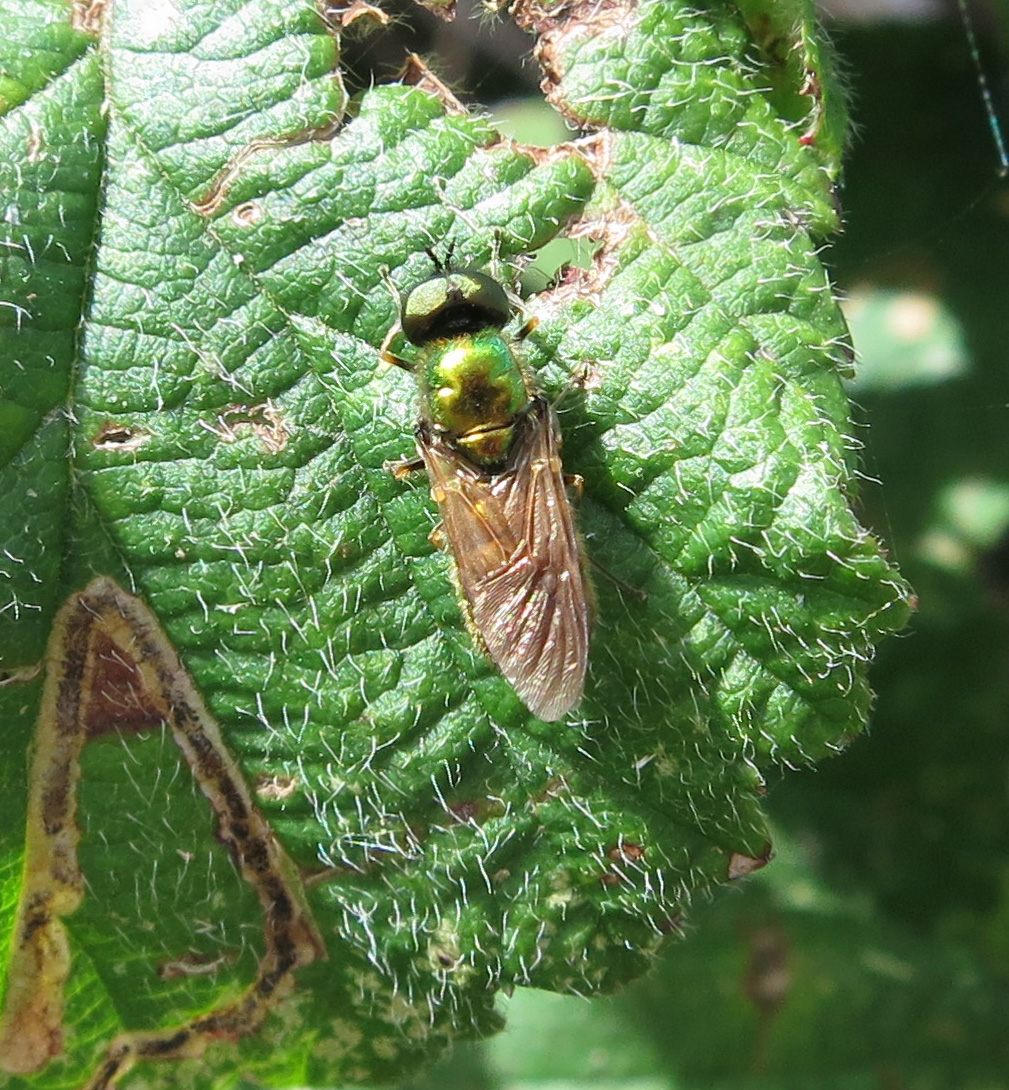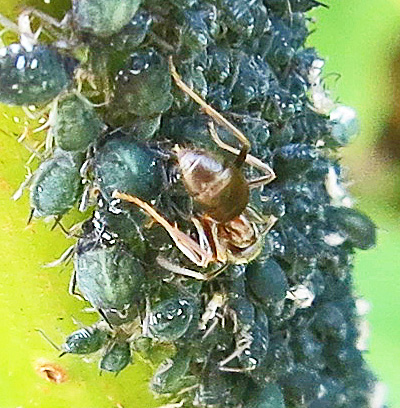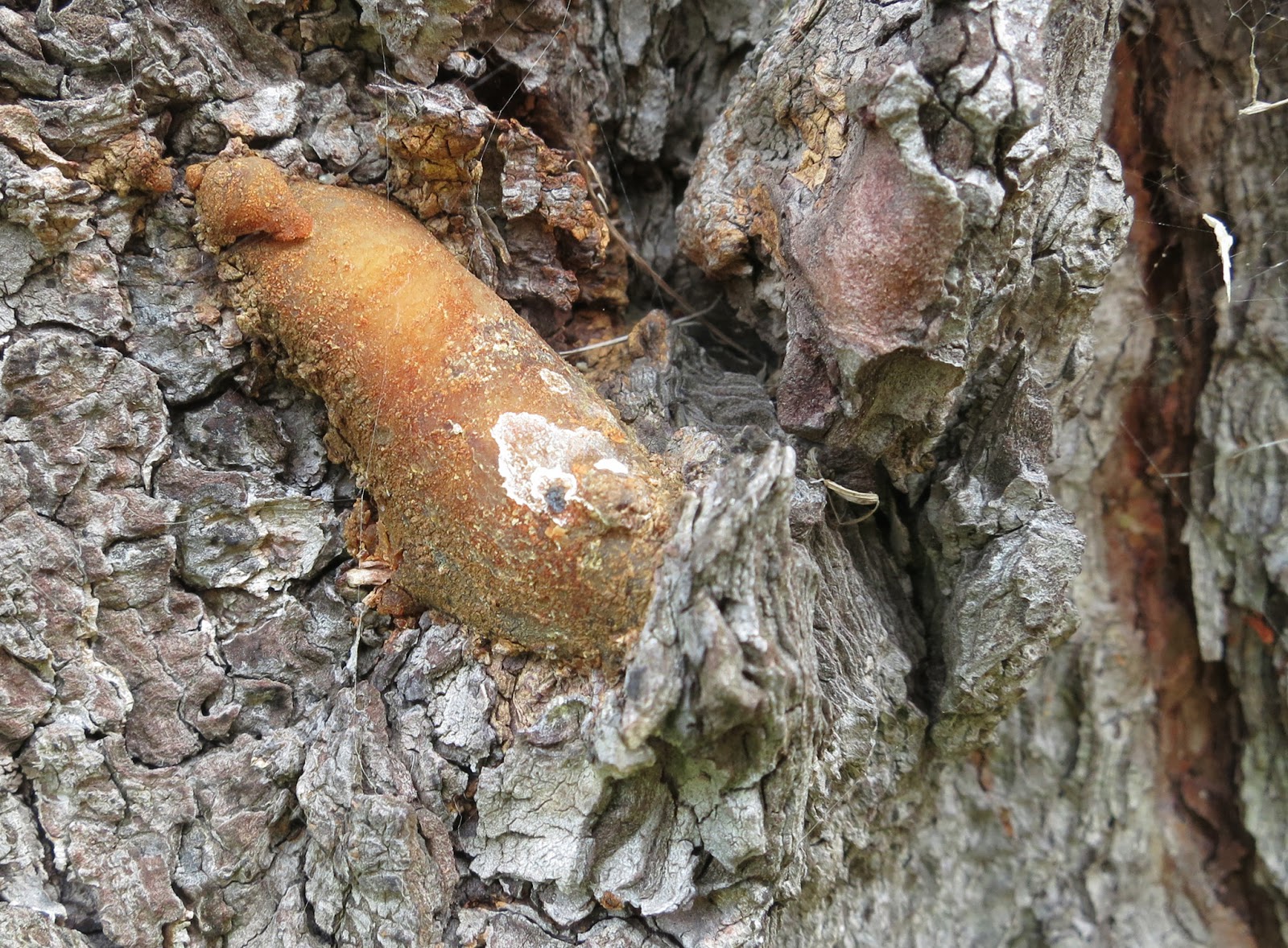Several times I've tried to photograph the tallest London Plane trees in Europe. Complete waste of time. I could show leaves. But all plane trees have leaves. I could show branches - but there's was no way I can give any idea of height. They are in a wood so you can't stand back. And even if you could - suppose there were a hill to stand on a bit distant and you photographed them poking above the other trees - still it wouldn't work. How tall are the trees around them?
 |
| I don't know why it looks as if it's standing in ice or snow. It wasn't. Blame it on the light. |
Now, inadvertently, I've visited the tallest Redwood tree in the UK. If there hadn't been a notice to say so, I would never have known. Its trunk wasn't especially wide - not as wide as you might have expected. And like the plane trees, its height was obscured by tall trees nearby.
I wasn't especially impressed - except for its exceptionally strokeable bark.
 |
| Common Frog - Rana temporaria June 22nd 2014 |
For, as you know, it's the small things in life and nature which usually catch my attention. Like this frog which was sitting still in a damp place beneath the tall-but-not-quite-so-tall trees across the road.
I found myself making an exception though for this tree - another Redwood.
(I'm being vague about the names of these trees - though I think they are Sequoia Wellingtonias. I wasn't paying attention. I was simply feeling their trunks and walking round them. I think you'd have done the same.)
This tree may not have been the tallest (though it was still very tall; for England) but the flare at the base of its trunk was massive - and beautiful.
Absurdly, here I am with a nature blog - and not minding that I don't know exactly what I've seen. And I took hardly any photographs. Sometimes (mostly if you are me) simply being in the presence of something - a tree, a frog, a leaf - is enough. And taking note of its parts instead of its impressive whole.
And the pictures imprinted in my brain are as good as any photos I might take. It's just that I can't share them as I can images from a camera.
* * *
If you'd like to see these trees for yourselves . . . and hunt for frogs . . . Here's the link to The Forestry Commission's Tall Trees Trail. (We saw a woodpecker walking up a trunk too.)
| I'm Following a Tree Are you? The next link box will open at 7:00am (UK Time) on 7th June 2014. If you'd like to know more about Tree Following, click the tree! |
P.S. The New Forest isn't exactly 'new'. It was developed for hunting in the late 11th century but it existed long before then. Here's the Wikipedia link.
Will you Help me Improve Loose and Leafy?
My stats count readers by country (UK, USA, China etc.) but I'd be interested to know something more precise - how many Loose and Leafy readers live in Dorset and the counties around. It would help me judge how much information about place I should give. Context is important for plants so I'd like to be sure to explain enough - but not so much I bore readers already familiar with the area. So . . . if you are a reader from the West Country - perhaps you could tick one of the boxes below? (They are a bit pale - you can find them above the labels - where it says 'REACTIONS'.) It's completely anonymous. The results are no more than you can see - a count of ticks per box. I'll leave the boxes there for a while. Please feel free to leave a tick for each post. (There's even a space for 'Elsewhere' so if you live 'elsewhere' you won't feel left out and get to tick a box too!)






























